
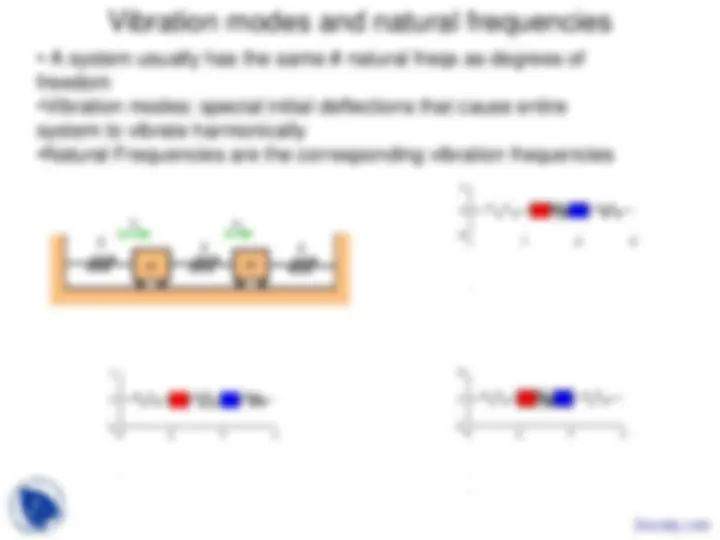
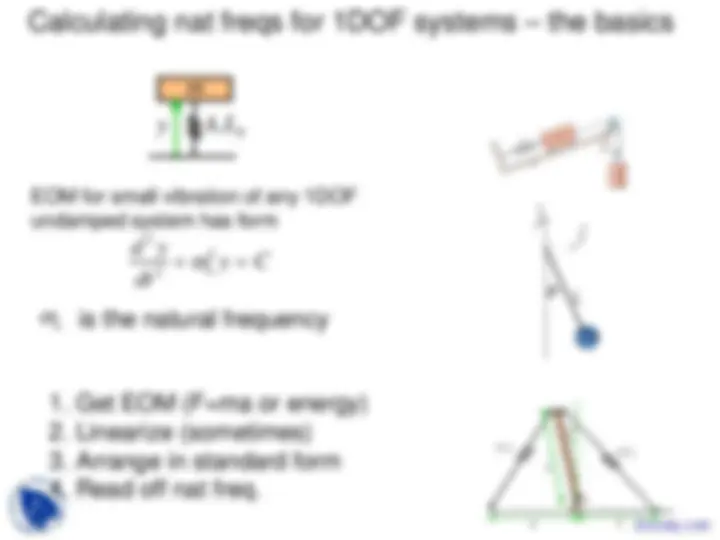
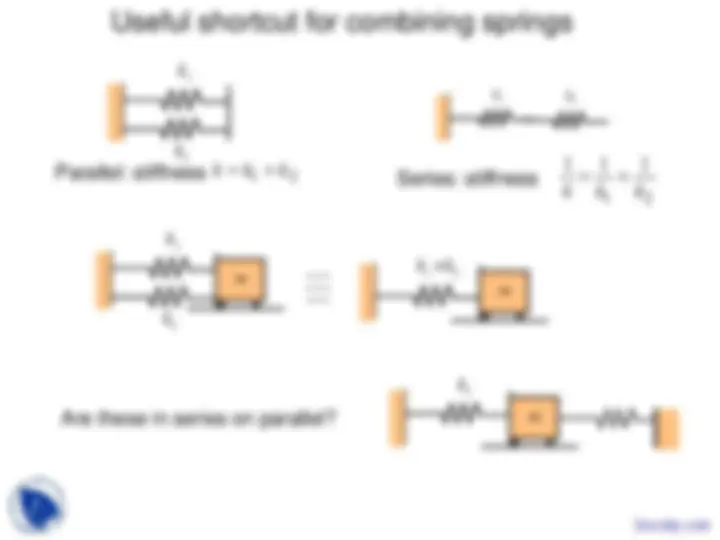
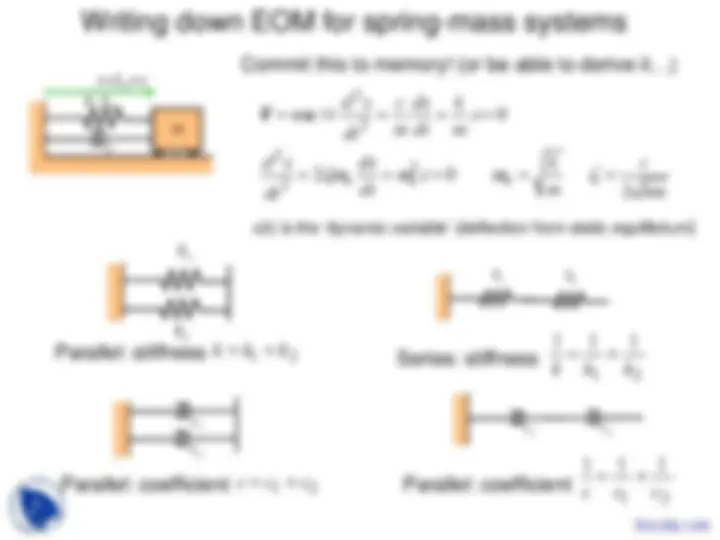
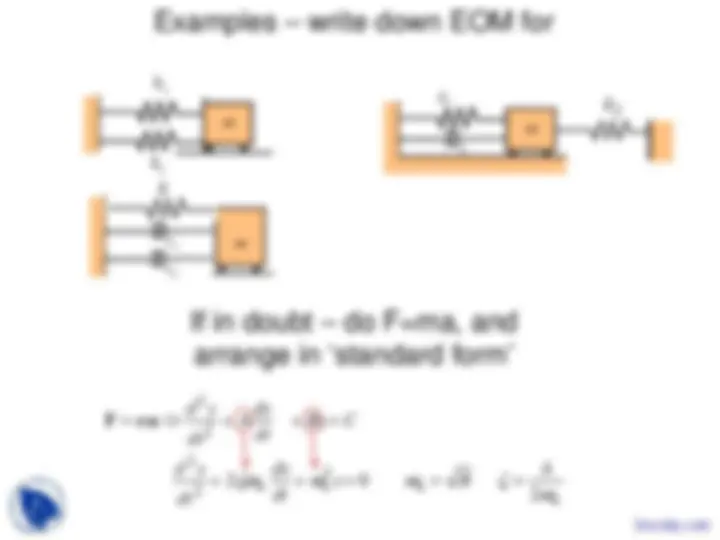
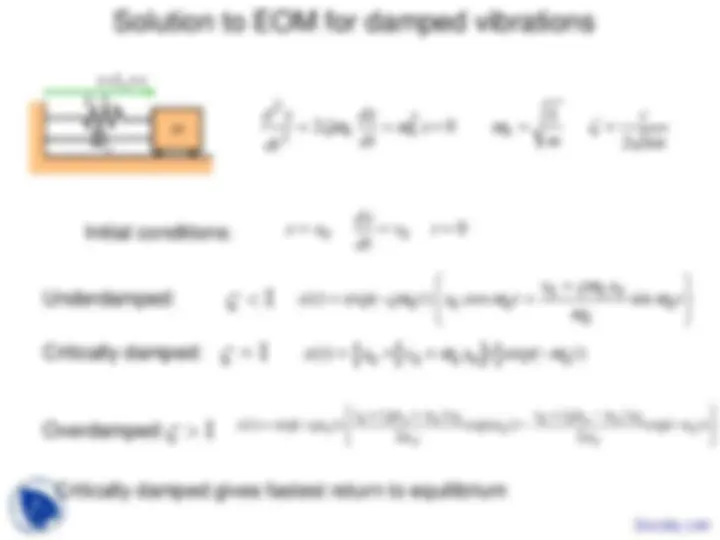


Study with the several resources on Docsity

Earn points by helping other students or get them with a premium plan


Prepare for your exams
Study with the several resources on Docsity

Earn points to download
Earn points by helping other students or get them with a premium plan
Community
Ask the community for help and clear up your study doubts
Discover the best universities in your country according to Docsity users
Free resources
Download our free guides on studying techniques, anxiety management strategies, and thesis advice from Docsity tutors
The key points in the lecture slides of the Dynamics and Vibrations are:Free Vibrations, Simple Harmonic Motion, Natural Frequency, Vibration Mode, Linear and Nonlinear System, Damping Factor, Overdamped Motion, Free Vibration Response, Design-Type Problems, Combining Springs
Typology: Slides
1 / 11

This page cannot be seen from the preview
Don't miss anything!







k
m m
k (^) k
x 1 x 2
m
k,L y 0
2 2 2 n
d y y C dt
n ω (^) is the natural frequency
k 1
k 2
k 1 k (^2)
k 1
k 2
m
k 1 +k 2
m
1 2
k 1
2
2
( )
d y f y C dt
Sometimes EOM has form + =
2 2 0 2 2 0
(0) ...
1 (0)
y
y
d y df m f y C dt dy
d y df C f y dt m dy m
=
=
−
s=L 0 +x
k, L (^0)
m
c
2
2
2 2 2
n n n
d x c dx k m x
dt m dt^ m
d x dx k c x
dt dt^ m^ km
F a
k 1
k 2
c (^2)
c 1
k 1 k (^2)
1 2
c 1 c 2
1 2
s=L 0 +x
k, L (^0)
m
c
2 2
2
n n n
d x dx k c x dt dt^ m^ km
dx x x v t dt
0 0 ( ) exp( ) 0 cos sin
n n d d d
v x x t t x t t
Underdamped: ς < 1
Critically damped: (^) ς = (^1) { [ ] } 0 0 0
n n x t = x + v + ω x t −ω t
0 (^ )^0 0 (^ ) 0 ( ) exp( ) exp( ) exp( ) 2 2
n d n d n d d d d
v x v x x t t t t
ςω ω ςω ω ςω ω ω ω ω
+ + + − = − (^) − −
Overdamped: (^) ς > 1
Displacement
time
t 0 t 1 t 2 t 3
T
x(t 0 ) x(t 1 ) x(t 2 ) x(t 3 )
t (^4)
log ( (^) n)
x t
n x t
2 2
2 2
n
δ π δ ς ω
π δ